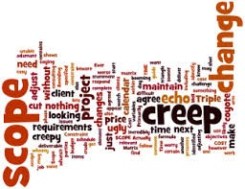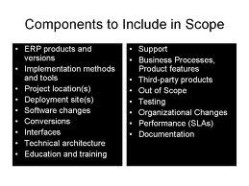When I first started my last job, I shared an office with an amazing person, “Sherry”. Sherry was always working hard, very rarely chatting like the other hens in the office, and almost always a smile on her sweet Southern belle face. She had these long papers taped, glued, stapeled, whatever she had to do, to keep them together. She was always focused and always doing something to those long papers. One day, my curiosity got the better of me and I asked about her papers. Sherry explained to me that all of the health inforamtion that were were required to have was also supposed to be “tracked” somehow. This was how she did it as her predecessor had taught her, in long hand, not utilizing the computer to her left.
We continued our talk and I asked if I could help make her job easier. Who wouldn’t like that, right? I asked her to give me an idea, or draw out her idea, of how should would want a “spreadsheet” like the one she had taped together, only on an 8.5″ x 14″ piece of paper. I asked her to give me a day or two to make it for her (I couldn’t wait that long!) and presented it to her a little while later in an Excel format. I love to create things and creating this spreadsheet for Sherry was very gratifying. I sent it to her in an email and began showing her how to input all the data, etc. for each classroom. Once the hard part was done, filling in all the blanks, she could see exactly what each child was missing from immunizations to a dental visit.
As a child care facility, there are certain things that must be done and certain things that must be tracked. We had a computer software program that would allow data entry but it was highly irritating and not user friendly at all. This was another reason for the spreadsheet. Sherry could take all of the information she had gathered and work directly off of one sheet instead of a million pieces of paper. However, it was still not possible to get everything into a nice Matrix on one sheet of paper.
My desk faced Sherry’s desk. I had happened to look up one afternoon to see that there were only a few sheets of paper on her desk. Usually, it was covered in papers (all in neat piles). I asked about her spreadsheet. The look on her face was priceless. She looked like a kid in a candy store with her favorite lollipop. She was working on her desktop and only had one sheet per classroom – eleven 8.5 x 14 sheets in total – all stapled together.
While I do not like to toot my own horn, too often for fear of getting a “big head”, I must say that I am rather proud of the work we did together to create that Health Tracking sheet. It is now 8 years later and Sherry still uses the same sheet. They finally changed to a different more user friendly software but the spreadsheet still stands on its own. I think what would be nice is to have the paper just a little longer so the font could be a little larger. Other than that, I think the spreadsheet looks great. Sherry did a great job conceptualizing what she needed and wanted for her tracking sheet.
The most frustrating part of the tracking sheet was the font size. Resizing the cells could be done but then it would be difficult to have all of the information need on one side of the paper – which is preferred. The most gratifying and satisfying part of the process in working with Sherry was helping her to be more efficient. Her manual spreadsheets were great! But having them on the computer and being able to do all the wonderous things within a digital world literally opened a whole new world for her. She now creates her own spreadsheets with little help. Every now and again, she will request some help or an “extra eye” to double check a formula or get help with layout.
Portny, et al (2008) stated that getting team buy helps the unit function better. Having consistent systems amd procedures is place is crucial. Each team member may have other projects competing for their time. While the team members may not be familiar with another’s style, knowledge and approach, they may may require time to build up a trusting relationship and be comfortable with each other’s styles and behaviors.
Sherry and I work well together. We understand each other and communicate well. In my opinion, we were the only two stakeholders. However, if we had to bring in another stakeholder, I suppose it would have to be the boss. She did ask questions a few times on why I was helping Sherry. To me, if a co-worker asks for your help, and you have the time or can schedule it in, should you not help as requested? Micro-managing behavior is not my thing. As long as it is work and pertains to the work at hand, stop trying to make a good situation difficult.
References
Portny, S. E., Mantel, S. J., Meredith, J. R., Shafer, S. M., Sutton, M. M., & Kramer, B. E. (2008). Project management: Planning, scheduling, and controlling projects. Hoboken, NJ: John Wiley & Sons, Inc.









